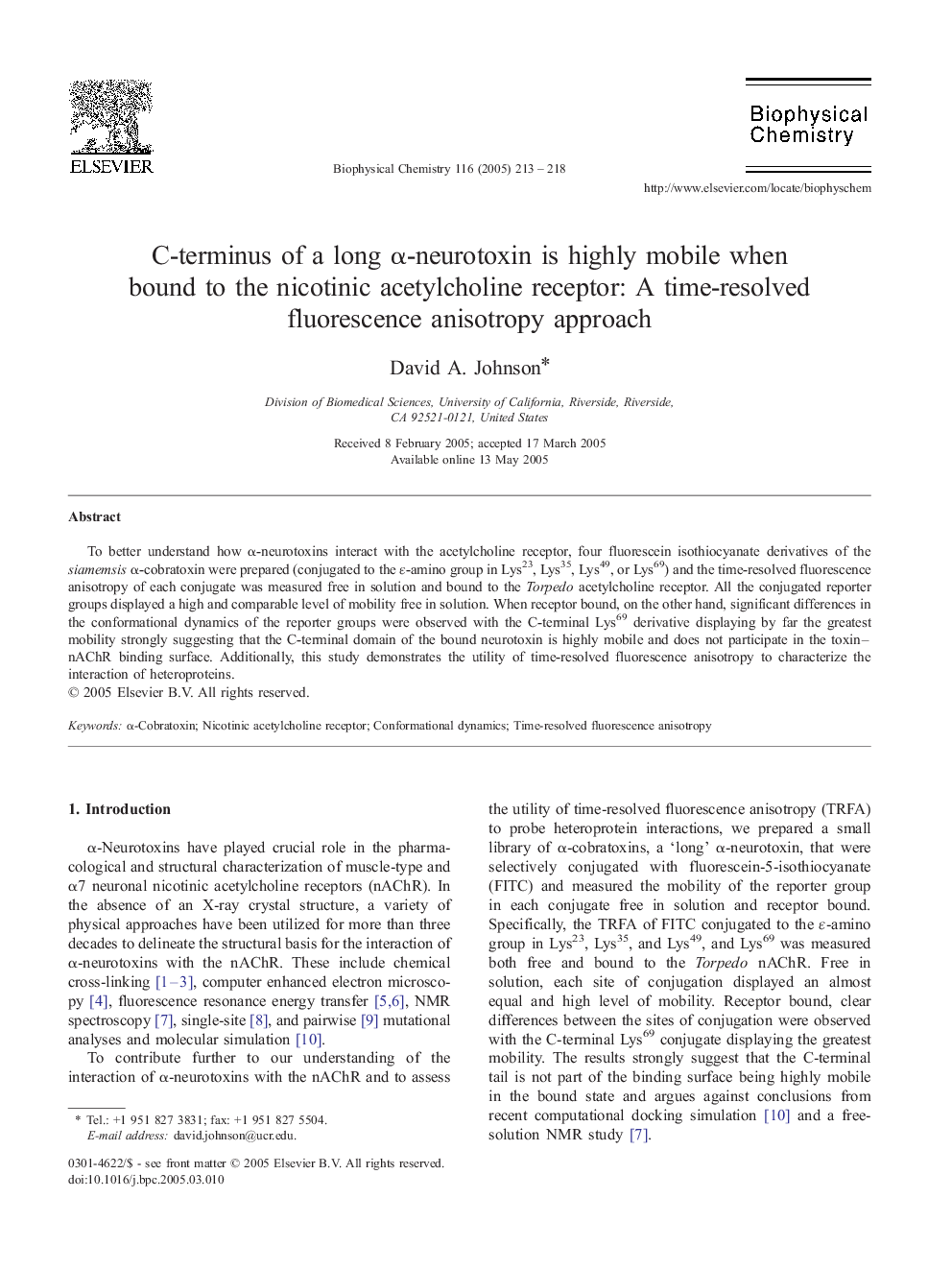| Article ID | Journal | Published Year | Pages | File Type |
|---|---|---|---|---|
| 9573423 | Biophysical Chemistry | 2005 | 6 Pages |
Abstract
To better understand how α-neurotoxins interact with the acetylcholine receptor, four fluorescein isothiocyanate derivatives of the siamemsis α-cobratoxin were prepared (conjugated to the ε-amino group in Lys23, Lys35, Lys49, or Lys69) and the time-resolved fluorescence anisotropy of each conjugate was measured free in solution and bound to the Torpedo acetylcholine receptor. All the conjugated reporter groups displayed a high and comparable level of mobility free in solution. When receptor bound, on the other hand, significant differences in the conformational dynamics of the reporter groups were observed with the C-terminal Lys69 derivative displaying by far the greatest mobility strongly suggesting that the C-terminal domain of the bound neurotoxin is highly mobile and does not participate in the toxin-nAChR binding surface. Additionally, this study demonstrates the utility of time-resolved fluorescence anisotropy to characterize the interaction of heteroproteins.
Keywords
Related Topics
Physical Sciences and Engineering
Chemistry
Physical and Theoretical Chemistry
Authors
David A. Johnson,
